Attrition: The Good, The Bad and The Ugly

According to the latest statistics from the US Bureau of Labor Statistics, the turnover rate is down to 3.1%. That's great news.....but is it the whole story? If you're in healthcare, manufacturing or heavy blue collar labor industries you know that number can be as high as 40%! That means you are turning nearly 1/2 of your workforce over every year! Putting a dollar amount on that would make your head spin. So how do you stop the bleeding? And when should you stop it?
Turnover and attrition are sometimes used interchangeably. Other times we fondly refer to attrition as something, good, like the sweet step-sister to the evil turnover brother. But the reality is attrition can be good, bad or really bad - downright ugly!
From the dictionary Britannica come these definitions for attrition:
1 chiefly US : a reduction in the number of employees or participants that occurs when people leave because they resign, retire, etc., and are not replaced— called also (British) natural wastage
2 : the act or process of weakening and gradually defeating an enemy through constant attacks and continued pressure over a long period of time
So what are some indicators that attrition has turned into an organizational "weakening" deficit? Let's take a look at both sides.
The Pros
Fresh Talent and New Perspectives
- When employees leave, especially those who may have been in the organization for a long time, it opens the door to bring in fresh talent. New hires often bring fresh ideas, updated skills, and new perspectives, which can help the company innovate and stay competitive. Sometimes, the influx of new employees can challenge outdated ways of thinking and foster positive change.
Cost Reduction
- While hiring new talent involves costs, attrition can lead to long-term savings if managed correctly. The company might not need to replace every position, especially if the roles can be redistributed across existing staff, potentially reducing payroll expenses. This can be especially beneficial for organizations going through a downsizing phase or trying to streamline operations.
Opportunity for Internal Growth
- Attrition can create opportunities for internal mobility. Allowing existing employees to step into higher roles, take on new challenges, or switch departments. This kind of upward mobility can increase employee engagement and retention, as workers see a clear path to advancement.
Culture Shift and Improved Fit
- When high performers stay and less engaged employees leave, assuming the GOOD attrition, the organization’s culture can become more aligned with its values and goals, improving collaboration and morale.
Natural Evolution
- As businesses evolve, so too must their workforce. Attrition allows for a natural evolution in staffing, making room for new skill sets that may be necessary for the company to succeed in changing markets or with emerging technologies.
The Cons
Loss of Institutional Knowledge
- One of the biggest downsides of attrition is the loss of institutional knowledge. Long-tenured employees possess a deep understanding of the company’s processes, history, and customers that is difficult to replace. When they leave, they take that knowledge with them, which can slow down productivity and disrupt operations.
Increased Workload for Remaining Employees
- When employees leave and their positions aren’t immediately filled, the remaining staff often have to absorb the extra workload. This can lead to burnout, frustration, and lower morale, especially if there’s no clear plan for managing the transition. If left unchecked, this stress can result in even more attrition, creating a harmful cycle.
Costs of Rehiring and Training
- While attrition can lead to cost reductions, replacing employees (especially key players) can be expensive. The costs of recruitment, training, and onboarding new staff can add up. You also have to account for the time it takes new hires to reach the productivity levels of their predecessors. This can have negative short-term business impact.
Damage to Company Reputation
- High rates of turnover can signal instability to both employees, potential employees and external stakeholders. It may cause potential candidates to shy away from applying, concerned that the company doesn’t offer a stable or supportive environment. If not addressed, high attrition can also harm the company’s brand, particularly in competitive industries.
Team Disruption
- A sudden departure of key team members can disrupt the cohesion of a team. Employees who have been working together for a long time develop an understanding of each other's working styles, strengths, and weaknesses. The loss of key personnel can throw off this balance and may require time to rebuild team dynamics.
Trust Erosion
- Sustained high attrition without a clear understanding of why good people are leaving can lead to a lack of trust in leadership and create a culture of fear.
Managing Attrition: Finding the Balance
While attrition can be both beneficial and harmful, managing it effectively is key. Organizations should have clear succession plans, focus on individualized employee development, and foster a positive culture to ward off unwanted turnover. At the same time, embracing some level of attrition can provide opportunities for innovation and growth. It’s all about striking a balance between retaining top talent and welcoming fresh perspectives to keep your company dynamic and resilient.
Attrition is a double-edged sword. It can bring both growth opportunities and challenges. The goal is not to eliminate attrition entirely, but to manage it strategically, ensuring that your organization benefits from the positive aspects while mitigating the risks of the "ugly: kind.











